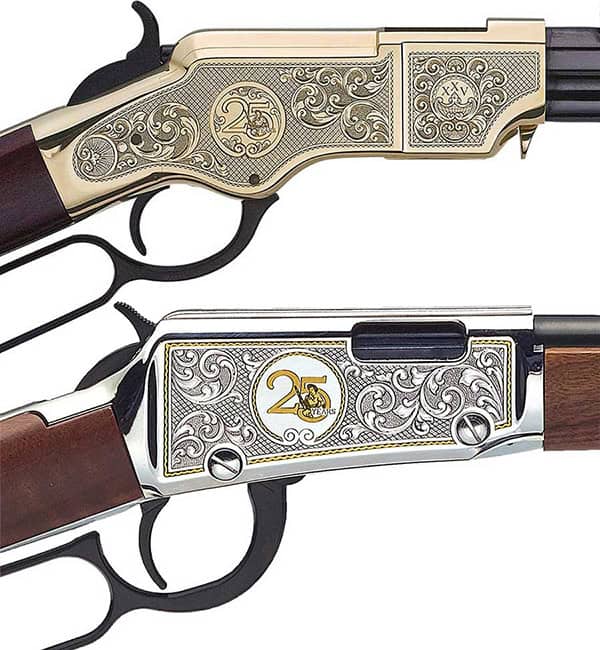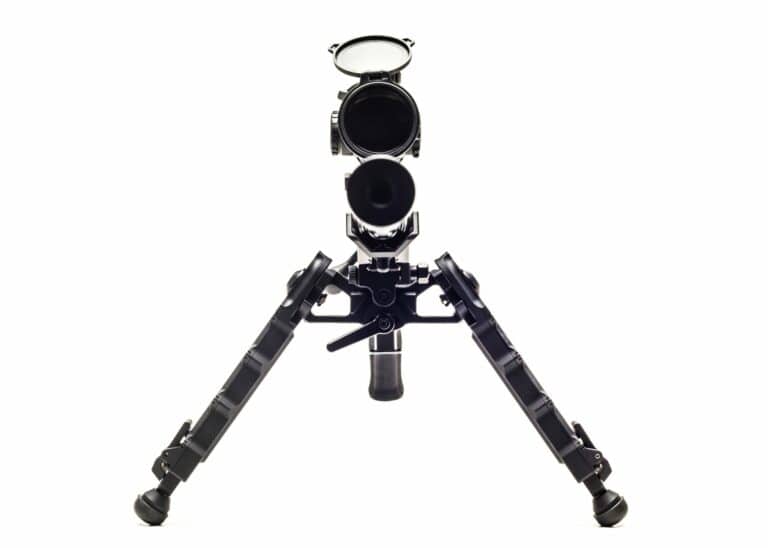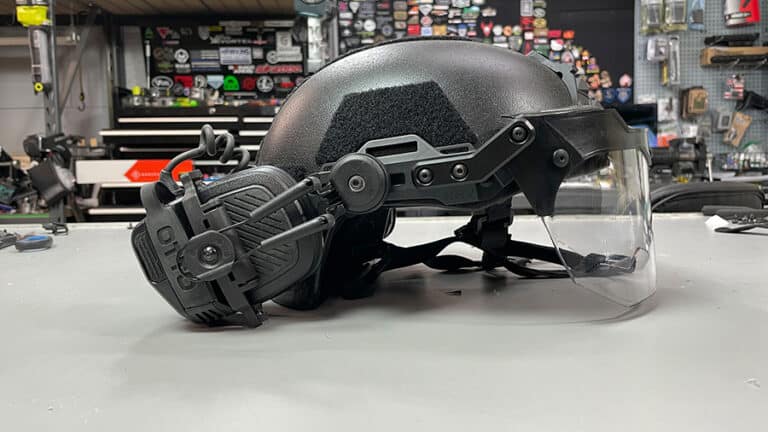TAG Precision—American-made RMR Plate for Kimber
For users of optics-ready Kimber 1911 and 2K11 pistols, TAG Precision has announced…
For users of optics-ready Kimber 1911 and 2K11 pistols, TAG Precision has announced…
Fountain Valley, CA—SureFire, LLC, manufacturer of the world’s finest—and most innovative—illumination tools and…
Shinenyx—creators of a cutting-edge fusion of digital night vision and thermal imaging technology—has…
The Mod-Navy Qual I’ve been doing this qual (or drill, or whatever the current nom…
• Built for road trips and off-road use• Manual transmission equipped• Wrapped in MultiCam Arctic…
I designed the Button Man to give shooters a low-round-count, low-light-engagement drill that involved both…
We set out to build the lightest AR possible and when it was all said and done, it weighed in at 4.5 pounds. Here’s how we did it…
Two years ago, it would not have been possible to build a functioning AR-15 that weighed under 5-pounds with off-the-shelf parts. They were just not available. Thanks to companies like Battle Arms, V7 Weapon Systems and 2A Arms, that has all changed in the last few months.
We set out on a mission to build the lightest AR possible and when it was all said and done, it weighed in right at 4.5 pounds. In this article we’ll share how we accomplished the build and discuss how well it shoots.
There are essentially two metal options when it comes to lightweight receiver sets on the market with more and more coming every day. Take note we said metal, as we are not factoring in composite polymer based lowers.
Either of these options makes a great foundation for your ultra-light build and it really comes down to which looks best to you. We will say that in our experience, Battle Arms puts a lot of attention to detail in their machining and their customer service is top-notch. We have heard great things about 2A Arms but we have no experience working first-hand with them.

For this article, we choose the 2A Arms Balios-Lite because we were going for the absolute lightest possible build. In order to achieve that, we had to use titanium parts for the majority of the components and enlist a specialist in that industry, none other than V7 Weapon Systems out of Grants Pass, Oregon.
V7 makes just about everything for the AR out of titanium, which is stronger and lighter than aluminum, but very expensive and time consuming to machine.
In the case of this build, V7 titanium was used for the Bravo Company patterned KMR barrel nut, Safety, Muzzle Brake, Magazine Release Bar and Button, Bolt Catch, Buffer Tube, Castle Nut, Buffer Retainer, Buffer Spring and a few other small parts. Basically, all of the small components with the exception of the takedown pins from Battle Arms Titanium EPS-TI pin set were made out of V7 titanium.
For the trigger we used the Elftman 3-gun match trigger, which utilized a skeletonized trigger and hammer. For the trigger pins, we used the partially hollowed out CMC Trigger pins.
The polymer ejection port door is from Strike Industries, the grip used is from Umbrella Corporation, the stock is from Battle Arms, and the sights are from Bobro Engineering.
The heavy hitter parts and the ones that usually make up the most weight are the rail, bolt carrier group (BCG), and barrel. We spent a lot of time researching the lightest options available on the market. We chose the ultra-light Keymod magnesium alloy KMR rail from Bravo Company Manufacturing (BCM), the titanium BCG from Boomfab and the barrel from Voodoo Innovations.









Altogether, she is light, but how does she shoot?
The first thing we hear from experienced shooters is that an AR this light must be very hard to control, especially on follow-up shots. Well we are here to tell you, that is true and…false.

A properly tuned gas system with the right muzzle device makes for a very soft shooting AR. Less Mass = Less Recoil. This gun is far gentler than many of my ARs and it is fast shooting too.

In fact, we had the opportunity to shoot the Battle Arms Sub 4lb OIP rifle at Shot Show this year. The recoil was so light, we barely felt it. More info about that one here
We attribute several factors for recoil: weight, balance, muzzle device, and gas flow to result in a proper tuning. It is up to you to figure that out, this was just our recipe and it worked well.

Check out other reviews that we have done.
Want more posts like this one? Subscribe to Guns & Tactics to receive email updates and special offers direct to your inbox!
Social Links:
– The views and opinions expressed on this web site are solely those of the original authors and contributors. These views and opinions do not necessarily represent those of Guns & Tactics, the administrative staff, and/or any/all contributors to this site.
– Affiliate Disclaimer: Guns and Tactics is reader/viewer supported. This post may contain affiliate links and we may earn a small commission when you click on the links at no additional cost to you. As an Amazon Affiliate I earn from qualifying purchases.
[mc4wp_form id=”30235″]
Guns & Tactics is an online media outlet that focuses on the firearms community, not just firearms and gear but also quality training, technical break downs and enlightening presentations.
Many moons ago, I was hanging out at my parents house one day, when my dad called me over. He had just gotten an Instagram account, and had…

Henry Repeating Arms is pleased to announce two limited-edition models celebrating the company’s twenty-fifth anniversary.

For Immediate Release: Debuted at SHOT Show 2018, the Accu-Tac HD-50 (Heavy Duty 50BMG) is the newest product in the AccuTac family of Bipods and was designed specifically…

Dave picked up a new Hard Head Veteran ATE helmet and wanted to add his favorite ear pro, the OTTO Range SA. See how it’s done.

Optics Planet is currently running a Winter Deal for Days event. Select triggers, uppers, stocks, grips and more are on sale.
[dcs_img_right framed=”black” w=”184″ h=”180″] http://gunsandtactics.wpengine.com/wp-content/uploads/2012/04/BianchiLogo.jpg [/dcs_img_right] COLUMBIA, MO –(gunsandtactics.com)– A group of actors, television personalities, and a world champion shooter will be joining the competition at the 2012…
© 2025 UN12 Magazine
© 2025 UN12 Magazine
Wait! Don’t forget to